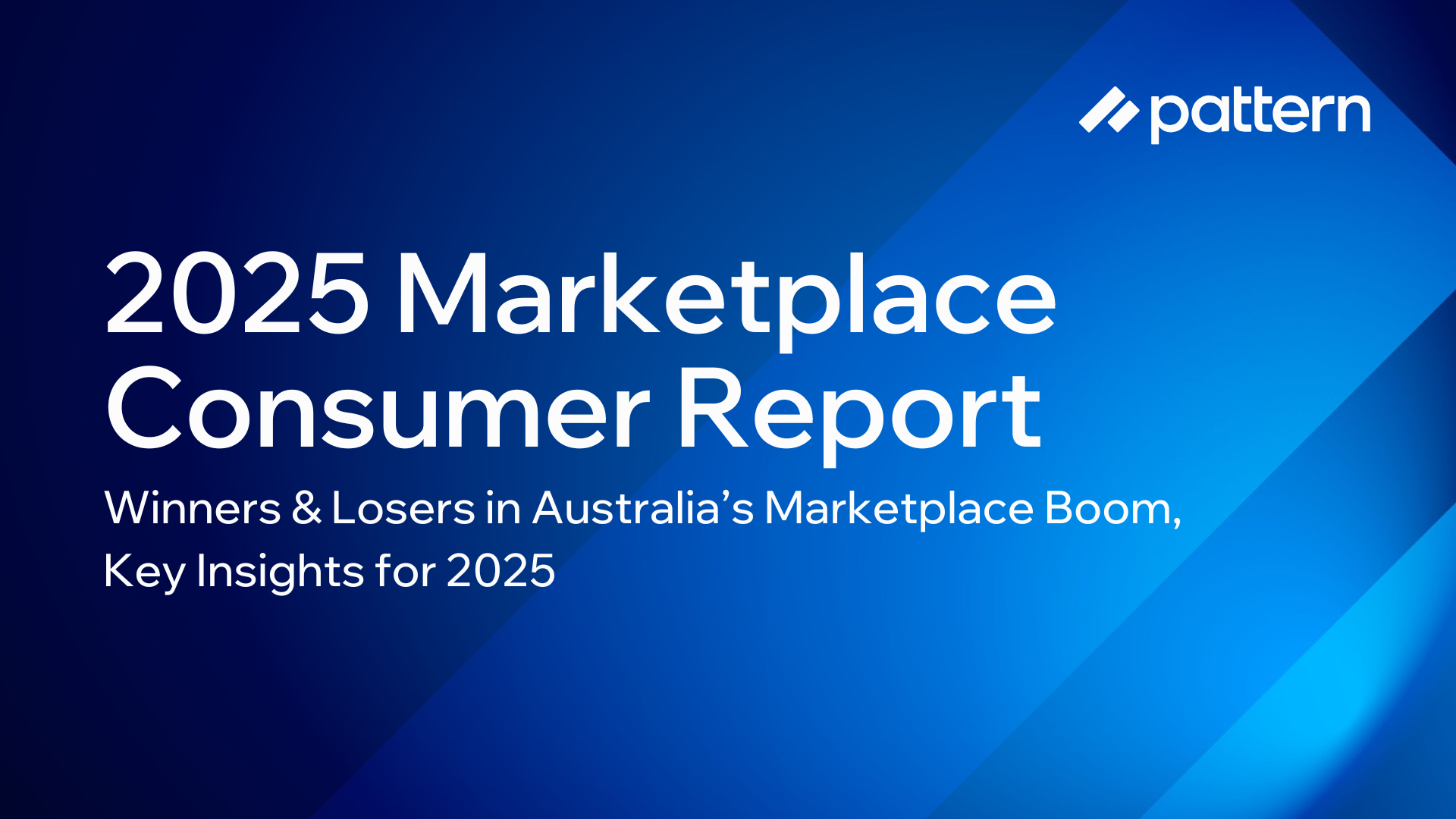The Australian marketplace sector is undergoing a significant transformation in 2025. With Amazon strengthening its foothold, Catch shutting down, and Chinese platforms like Temu and Shein facing slowing growth, the landscape is shifting rapidly. At Pattern, we’ve examined these changes in our latest ‘2025 Marketplace Consumer Report’ and what they mean for brands navigating the evolving eCommerce space.
Amazon’s Continued Rise in Australia
Amazon’s dominance in the Australian marketplace sector continues to grow. With an additional 1.1 million Australian users in 2024, bringing the total to 7.9 million, Amazon now accounts for 10% of the country’s online shopping spend.
The company’s commitment to fast delivery, product quality, and a seamless shopping experience has cemented its reputation among Australian consumers. With the upcoming launch of ‘Haul,’ a budget-friendly storefront aimed at price-conscious shoppers, Amazon is set to further disrupt the market, directly challenging competitors like Temu.
“Amazon’s ability to adapt and expand its offerings has positioned it as the go-to marketplace for Australians,” says Merline McGregor, Managing Director of Pattern Australia. “The introduction of Haul could significantly influence consumer behavior, particularly among price-sensitive shoppers.”
The Struggles of Chinese Marketplaces
Temu and Shein, once viewed as disruptive forces in Australian eCommerce, are now facing challenges in maintaining their growth. According to our research, only 12% of consumers trust Temu’s product quality, leading to a predicted 7% decline in shoppers. Shein faces similar struggles, with just 11% consumer trust.
Many Australians initially flocked to these platforms due to aggressive pricing and large-scale marketing. However, early adopters have encountered reliability issues, leading to hesitation about repeat purchases. Only 43% of shoppers say they would consider buying from Temu in 2025— a figure that may decline further unless improvements in quality and delivery are made.
“Temu and Shein’s initial success was built on curiosity and affordability,” explains McGregor. “However, as Australian consumers prioritize reliability and quality, these platforms must work harder to establish trust and legitimacy in the market.”
The Fall of Catch and the Rise of Other Players
The closure of Wesfarmers-owned Catch marks a pivotal moment in Australia’s eCommerce landscape. While Catch struggled to compete with larger international players, other platforms like Kogan and MyDeal are experiencing growth—albeit from a smaller consumer base.
Kogan remains strong in Electronics & Computer (11%) and Home & Kitchen (8%), while MyDeal is gaining traction in Home & Kitchen (5%) and Clothing, Shoes & Accessories (5%).
Marketplaces as Product Discovery Hubs
One of the biggest shifts in consumer behavior is where shoppers begin their product research. Traditional search engines like Google have seen a 7% decline in usage for product discovery, while Amazon’s share in this space has grown 27% year over year.
In 2024, 63% of Australian consumers purchased a product they had never bought from Amazon before, and 38% visited a brand’s website after discovering it on the platform. This highlights how marketplaces are not just transactional hubs but also powerful brand discovery tools.
“Consumers trust marketplaces for product recommendations, customer reviews, and convenience,” McGregor notes. “Brands that optimize their presence on these platforms can significantly expand their reach.”
Looking Ahead: How Brands Can Succeed in 2025
With 94% of Australians shopping on marketplaces, brands must adapt their strategies to stay competitive. Key takeaways from our research include:
- Prioritize Amazon – With the platform continuing its upward trajectory, brands should refine their Amazon strategy to maximize visibility and conversions.
- Monitor Chinese marketplaces closely – While still popular, trust issues may impact future sales. Brands must assess whether these platforms align with their long-term goals.
- Leverage marketplaces for brand discovery – Optimizing product listings, managing customer reviews, and ensuring strong branding will be crucial.
- Diversify across marketplaces – With Kogan, MyDeal, and eBay maintaining strong category-specific presences, brands should explore multiple channels to capture different audiences.
“The Australian marketplace sector is evolving rapidly,” McGregor concludes. “Brands that stay ahead of these trends and refine their marketplace strategies will be best positioned for success in 2025 and beyond.”
For a deeper dive into our insights, download the full ‘2025 Marketplace Consumer Report’.



